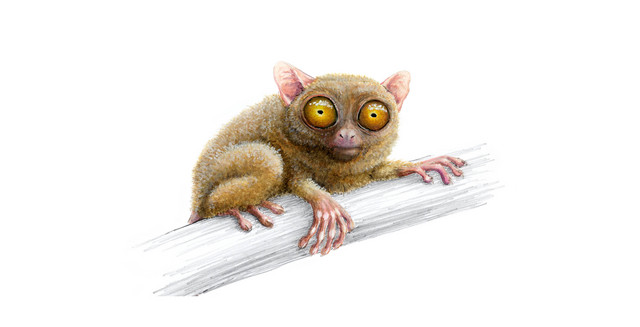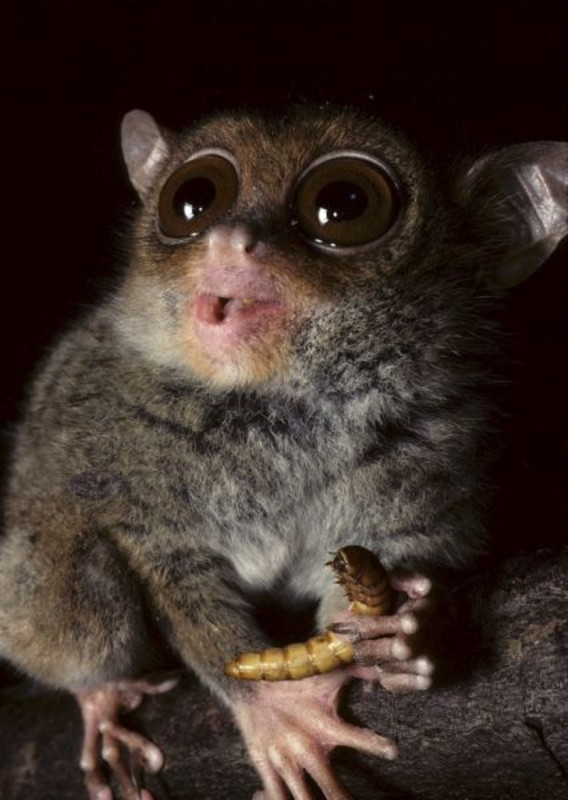Tarsier genome provides new insights into the evolution of primates
A German-American research team has analyzed the genetic makeup of the Philippine tarsier and with that, they have shed new light on the early evolution of primates. The participants of the study were the Institute of Experimental Pathology of the Medical Faculty in Münster, the McDonnell Genome Institute in Washington, the University of California in Santa Cruz, as well as the German Primate Center (DPZ) - Leibniz Institute for Primate Research in Göttingen. Through the investigations of specific genomic segments, the so-called jumping genes in the genome of the small forest dwellers, researchers have discovered new elements and their distribution mechanisms. In addition, they are able to explain the activity patterns of various other jumping genes in the course of the primate evolution. Since humans also belong to the order of primates, the researchers were able to draw conclusions on our own development based on the results (Nature Communications 7, 12997).
Dusk in the Philippine rainforest. In the dense branches of a treetop, a somewhat unusual fellow awakens. The roughly fist-sized forest dweller climbs from its tree hole and prepares for the night. With its big eyes, each one bigger than its brain, he takes aim at a grasshopper. He is unable to move his eyes, but thanks to his highly modified cervical vertebra, he has the ability to turn his head 180 degrees in either direction. With his long, thin fingers the small carni- and insectivore attacks the grasshopper and enjoys it. Its scientific name tarsier (tarsius singular) was given because of his special tarsi feet. The hind legs are strong, and he can take a leap of up to six meters from tree to tree. With a weight of approximately 150 grams, the tarsier is lighter than two bars of chocolate but for research purposes, he is considered a heavyweight because he covers an unknown period of primate evolution.
What can such a strange contemporary tell us about the early evolution of primates? The answer lies hidden in the genome. To find out just what makes these little primates so unique, a German-American research team used modern genetic methods (i.a. high-throughput sequencing) to decipher its genetic material. In the subsequent in-depth analyses of genetic material, special attention was given to so-called jumping genes that can play an important role in the evolution of genes and genomes and thus also for the evolution of primates.
The scientists led by Jürgen Schmitz from the Institute of Experimental Pathology of the Medical Faculty Münster and Wesley Warren from the McDonnell Genome Institute in Washington have a special interest in the analysis of the jumping genes of the tarsiers. „By analyzing the jumping elements, we can learn so much about our own evolution," explains Jürgen Schmitz, director of the study. These jumping genes are DNA sections that can copy themselves and take up new positions in the genome. As in humans, these jumping genes make up around half of the genetic material in tarsiers. In cooperation with the University of California, Santa Cruz as well as Christian Roos and Angela Noll of the German Primate Center (DPZ) in Göttingen, the scientists discover jumping genes that were unknown to date and explain their distribution mechanisms. "Thanks to the availability of the tarsier genome, it was possible to detect integrations of jumping genes that dates way back," explains Jürgen Schmitz.
Comparative studies with other primates have shown that around 50 million years ago in earlier descendants of haplorrhines, many of these genes have lost their jumping character. Instead, other forms of jumping genes evolved in primates, which now account for a very large part of our own genome. An extreme decline in the primate population was probably the reason for the change. The genetic material of the tarsier is of particular scientific interest in the phylogenetic development because it has characteristics of two different species of primate groups - that of the strepsirrhines, which include the lemurs and loris, as well as characteristics of higher primates to which the monkeys and humans belong.
"In addition, we have for the first time discovered that a complete genome of a mitochondrion is integrated into a nuclear genome," explains Jürgen Schmitz. "Mitochondria are cellular organelles with their own genetic material. A complete integration has never been proven before in mammals.“ Furthermore, several genes were identified that make the small forest dwellers so unique and are responsible for their distinctive vision and extraordinary jumping ability. The analysis also showed that currently the population size of the tarsier is at its lowest levels in history. "We hope that our new research results and the unique position of tarsiers in the phylogeny of primates will entail many further studies with the aim of a deeper understanding of the biodiversity and genetics of primates, as well as an increased awareness of these particular primates ", Angela Noll of the German Primate Center summarizes the importance of the study.
Original publication:
Schmitz, J. et al. (2016): Genome sequence of the basal haplorrhine primate Tarsius syrichta reveals unusual insertions. Nat. Commun. 7, 12997 doi: 10.1038/ncomms12997



